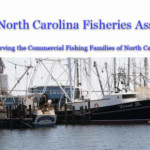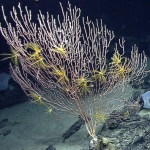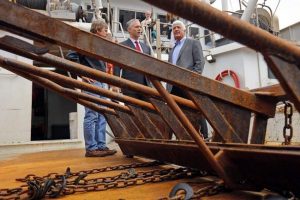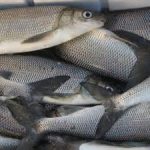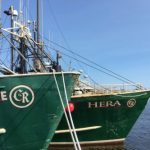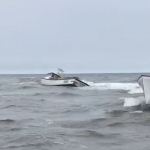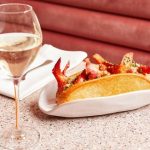Tag Archives: Columbia River
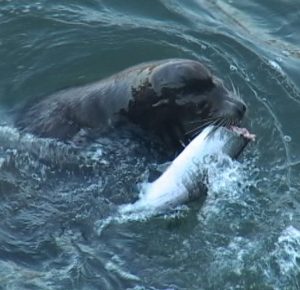
Oregon Eyes Killing Sea Lions to Save Steelhead Trout
Fish managers scrambling to gain approval to kill dozens of California sea lions feasting on threatened winter steelhead trout got a bump this week from a study blaming the creatures for taking food from orcas. But some say the effort is a misguided attempt to scapegoat natural predators for the human-caused decline of their prey. In 1999, about 15,000 winter steelhead passed Willamette Falls. In 2016, scientists with the Oregon Department of Fish and Wildlife counted just 512.,, “We’re looking at a threat of extinction posed by sea lions,” Shaun Clements, the agency’s senior fish policy advisor, told the Fish and Wildlife Commission at a meeting in September. click here to read the story 08:04
Fish traps of past may help future of Columbia salmon
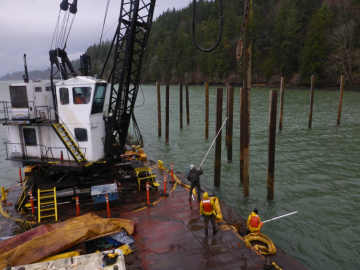 The once-outlawed commercial fishing technique has been generating fresh interest in the face of declining wild salmon runs and might offer a less lethal way of handling wild salmon while harvesting hatchery fish for the consumer. Fish traps were once used broadly in the Northwest during the early part of the last century to harvest salmon for the canneries, but they were eventually outlawed because they caught too many fish.,, Jim Wells is a member of the lower Columbia River gill-net fleet, and after the conservation group published its findings on the traps he did a little bit of research. Using the catch data from the trap, he figured just how many sell-able fish they had caught during this last season. click here to read the story 14:52
The once-outlawed commercial fishing technique has been generating fresh interest in the face of declining wild salmon runs and might offer a less lethal way of handling wild salmon while harvesting hatchery fish for the consumer. Fish traps were once used broadly in the Northwest during the early part of the last century to harvest salmon for the canneries, but they were eventually outlawed because they caught too many fish.,, Jim Wells is a member of the lower Columbia River gill-net fleet, and after the conservation group published its findings on the traps he did a little bit of research. Using the catch data from the trap, he figured just how many sell-able fish they had caught during this last season. click here to read the story 14:52
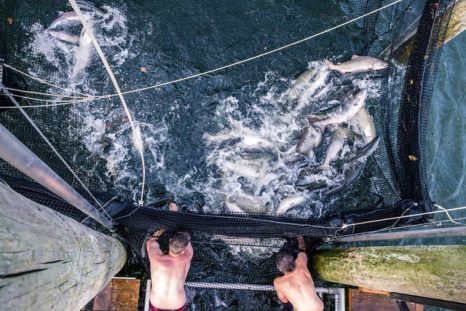
Fish traps for Columbia River salmon get another look
More than eight decades after their demise, fish traps are getting a fresh look from researchers convinced they offer a more sustainable way to catch Columbia River salmon. These traps are formed by nets attached to pilings that gently guide the fish into a kind of underwater corral. Wild fish protected under the federal Endangered Species Act can be released to resume their upstream journey, while their more abundant hatchery brethren are sent to the processors. These traps are formed by nets attached to pilings that gently guide the fish into a kind of underwater corral. Wild fish protected under the federal Endangered Species Act can be released to resume their upstream journey, while their more abundant hatchery brethren are sent to the processors. click here to read the story 12:55
Warning signs for salmon
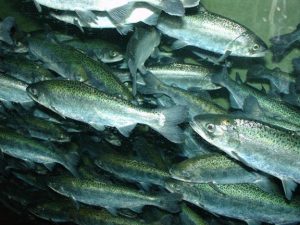 The numbers of young salmon caught off the Oregon and Washington state coasts during an annual federal survey cruise this June were among the lowest recorded in the past 20 years. In fact, numbers were low across nearly all the species researchers regularly catch or observe — from birds like the common murre to forage fish like anchovies and smelt. Months ahead of schedule, as a kind of heads up, West Coast researchers, project managers and program directors decided to send out a memo in mid-August detailing their initial findings — data that would usually be combined with other information and put out on a webpage at the end of the year. The data is preliminary, but researchers say it is clear many young coho and Chinook salmon didn’t survive the migration from freshwater streams and rivers to the ocean this year, while poor ocean conditions could impact salmon returns to the Columbia River for the next few years. click here to read the story 21:44
The numbers of young salmon caught off the Oregon and Washington state coasts during an annual federal survey cruise this June were among the lowest recorded in the past 20 years. In fact, numbers were low across nearly all the species researchers regularly catch or observe — from birds like the common murre to forage fish like anchovies and smelt. Months ahead of schedule, as a kind of heads up, West Coast researchers, project managers and program directors decided to send out a memo in mid-August detailing their initial findings — data that would usually be combined with other information and put out on a webpage at the end of the year. The data is preliminary, but researchers say it is clear many young coho and Chinook salmon didn’t survive the migration from freshwater streams and rivers to the ocean this year, while poor ocean conditions could impact salmon returns to the Columbia River for the next few years. click here to read the story 21:44
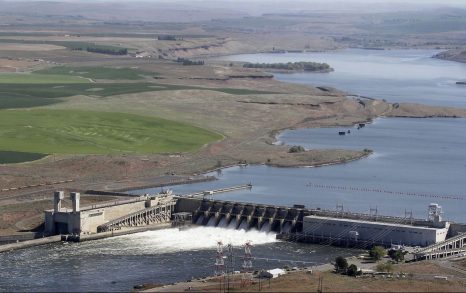
Trump administration urged to avoid salmon protection rules
A group that represents farmers is calling the costs of saving imperiled salmon in the largest river system in the Pacific Northwest unsustainable and is turning to the Trump administration to sidestep endangered species laws. The Columbia-Snake River Irrigators Association wants the government to convene a Cabinet-level committee with the power to allow exemptions to the Endangered Species Act. The irrigators association is frustrated with court rulings it says favor fish over people, claiming the committee could end years of legal challenges over U.S. dams on the Columbia and Snake rivers and bring stability for irrigators, power generators and other businesses that rely on the water. click here to read the story 18:12
Oregon, Washington and tribes again take aim at sea lions in dispute over salmon
 Congress is once again considering giving Oregon and Washington fish and wildlife officials and regional tribes broader authority to kill sea lions below the Bonneville Dam, an effort supporters say is necessary to protect 13 endangered species of salmon and steelhead. But unlike previous attempts to rein in the marine mammals, which are protected under federal law, the legislation goes beyond killing the dozens that converge each spring on the fish logjam at the Columbia River dam 145 miles from the Pacific Ocean. The bipartisan team behind the bill — Reps. Jaime Herrera-Beutler, R-Washington, and Kurt Schrader, D-Oregon — want to go much further. They also want to make it easier to kill California sea lions found on the Willamette River and its tributaries, and anywhere on the Columbia River east of Interstate 205. If the legislation is approved, as many as 920 sea lions could be killed annually, compared with 92 under current law. click here to read the story 08:54
Congress is once again considering giving Oregon and Washington fish and wildlife officials and regional tribes broader authority to kill sea lions below the Bonneville Dam, an effort supporters say is necessary to protect 13 endangered species of salmon and steelhead. But unlike previous attempts to rein in the marine mammals, which are protected under federal law, the legislation goes beyond killing the dozens that converge each spring on the fish logjam at the Columbia River dam 145 miles from the Pacific Ocean. The bipartisan team behind the bill — Reps. Jaime Herrera-Beutler, R-Washington, and Kurt Schrader, D-Oregon — want to go much further. They also want to make it easier to kill California sea lions found on the Willamette River and its tributaries, and anywhere on the Columbia River east of Interstate 205. If the legislation is approved, as many as 920 sea lions could be killed annually, compared with 92 under current law. click here to read the story 08:54
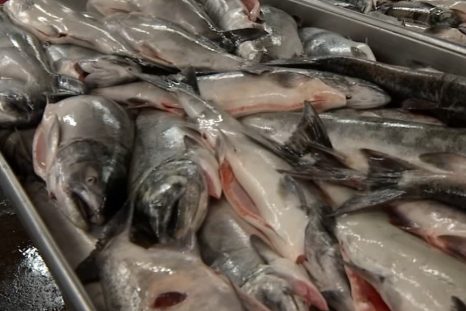
Limited salmon numbers, sea lion population making tough season for fishermen
Governor Brown, along with Governor Jerry Brown of California, recently submitted a request to U.S. Commerce Secretary Wilbur Ross for a declaration of a “catastrophic regional fishery disaster,” and a commercial fishery failure. The request comes after the National Marine Fisheries Service closed the southern half of the Oregon coast to commercial salmon fishing to protect dwindling stocks of Chinook salmon on the Klamath River. “When you look at the Klamath situation, it affects fisheries all up and down the coast,” said Steve Fick, who owns Fishhawk Fisheries in Astoria. Executive Director of the Port of Astoria Jim Knight said the south coast closure will likely mean more fishing boats competing for limited numbers of salmon on the north coast. click here to read the story 08:09
Bad salmon run hints at trouble ahead
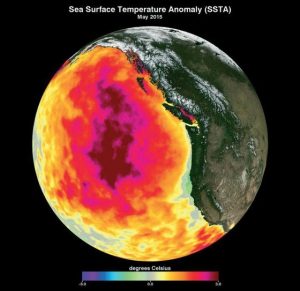 Count backward three years and we come to 2014 — precursor to this spring’s extremely poor salmon returns. Fewer than 20,000 adult spring Chinook and about 1,500 immature jacks have been counted at Bonneville Dam, compared to 10-year averages of about 127,000 and 17,000. Shad, another species that should begin surging toward inland spawning grounds about now, reached a count of 26 at Bonneville late last week, compared to the 10-year average of more than 11,000. In the case of Chinook, actual returns may not be quite so bleak as the dam count indicates. Heavy mountain runoff has made the Columbia’s water cloudy and cold. Test fisheries found quite a few Chinook loitering here in the estuary, delaying their swim upstream. But with the start of summer only a month away, there isn’t much time left for the spring run to come through. If they don’t make it to spawning grounds, the run three years from now also will be weak. click here to read the op-ed 09:36
Count backward three years and we come to 2014 — precursor to this spring’s extremely poor salmon returns. Fewer than 20,000 adult spring Chinook and about 1,500 immature jacks have been counted at Bonneville Dam, compared to 10-year averages of about 127,000 and 17,000. Shad, another species that should begin surging toward inland spawning grounds about now, reached a count of 26 at Bonneville late last week, compared to the 10-year average of more than 11,000. In the case of Chinook, actual returns may not be quite so bleak as the dam count indicates. Heavy mountain runoff has made the Columbia’s water cloudy and cold. Test fisheries found quite a few Chinook loitering here in the estuary, delaying their swim upstream. But with the start of summer only a month away, there isn’t much time left for the spring run to come through. If they don’t make it to spawning grounds, the run three years from now also will be weak. click here to read the op-ed 09:36
Bi-Partisan Bill seeks to allow tribes to kill Columbia River sea lions
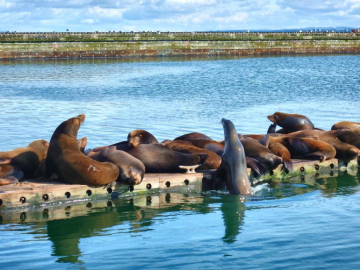 Some Northwest Indian tribes would be allowed to kill a limited number of sea lions that prey on endangered salmon in the Columbia River under a bill introduced in Congress. The bipartisan bill was introduced last weekend by U.S. House members Jaime Herrera Beutler, a Washington Republican, and Kurt Schrader, an Oregon Democrat. If passed, the bill would allow the Warm Springs, Umatilla, Yakama, and Nez Perce tribes to kill some sea lions that are decimating endangered salmon runs during their return from the ocean to inland spawning grounds. Currently only the states of Oregon, Washington and Idaho can kill sea lions along the river. “The spring chinook loss, coupled with the growing sea lion population, has placed us in an emergency situation,” said Leland Bill, chairman of the commission. Sea lion populations have surged since the passage of the Marine Mammal Protection Act in 1972. There were about 30,000 California sea lions when the act passed, but the population has since grown to over 300,000. click here to read the article 12:22
Some Northwest Indian tribes would be allowed to kill a limited number of sea lions that prey on endangered salmon in the Columbia River under a bill introduced in Congress. The bipartisan bill was introduced last weekend by U.S. House members Jaime Herrera Beutler, a Washington Republican, and Kurt Schrader, an Oregon Democrat. If passed, the bill would allow the Warm Springs, Umatilla, Yakama, and Nez Perce tribes to kill some sea lions that are decimating endangered salmon runs during their return from the ocean to inland spawning grounds. Currently only the states of Oregon, Washington and Idaho can kill sea lions along the river. “The spring chinook loss, coupled with the growing sea lion population, has placed us in an emergency situation,” said Leland Bill, chairman of the commission. Sea lion populations have surged since the passage of the Marine Mammal Protection Act in 1972. There were about 30,000 California sea lions when the act passed, but the population has since grown to over 300,000. click here to read the article 12:22
Researchers: Columbia spring chinook forecast might be too high
 Fisheries managers have been predicting a slightly below-average run of spring chinook salmon on the Columbia River this year, but a newly published suggests that it may be worse. According to researchers from Oregon State University and the National Oceanic and Atmospheric Administration, ocean conditions were historically bad in the spring of 2015, when migrating yearling fish that will comprise the bulk of this spring’s adult chinook salmon run first went out to sea. In fact, Pacific Decadal Oscillation values — which reflect warm and cold sea surface temperatures — suggest it was one of the warmest nearshore oceans encountered by migrating chinook salmon dating back to at least 1900. The lack of food for the salmon in 2015 may have resulted in significant mortality that will show in this year’s run of Columbia River springers. One way or another, it will provide new information on fish survival and whether juvenile salmon prey data can help resource managers predict future returns. continue reading the story here 10:11
Fisheries managers have been predicting a slightly below-average run of spring chinook salmon on the Columbia River this year, but a newly published suggests that it may be worse. According to researchers from Oregon State University and the National Oceanic and Atmospheric Administration, ocean conditions were historically bad in the spring of 2015, when migrating yearling fish that will comprise the bulk of this spring’s adult chinook salmon run first went out to sea. In fact, Pacific Decadal Oscillation values — which reflect warm and cold sea surface temperatures — suggest it was one of the warmest nearshore oceans encountered by migrating chinook salmon dating back to at least 1900. The lack of food for the salmon in 2015 may have resulted in significant mortality that will show in this year’s run of Columbia River springers. One way or another, it will provide new information on fish survival and whether juvenile salmon prey data can help resource managers predict future returns. continue reading the story here 10:11
Celebrate the pragmatic elegance of gasoline marine engines
 Gasoline marine engines revolutionized working life on the Columbia River estuary the way cotton gins did in the South, but they don’t get much respect. In the course of a half a tide, the river can go from mirror-like lake to something resembling a Michael Bay disaster movie. It’s a deceptive monster, one which generations of native and white fishermen were obliged to ride in little wooden boats. Until around 1900, the river’s sailing gillnet boats were at the whim of the wind, relying on canvas and oars to navigate the wild waters of the estuary and ocean plume in pursuit of salmon. Brave and courageous as they were, there wasn’t much they could do when a typhoon blew itself out on this fatal shore, driving boats onto the rocks like jellyfish drifted up on the beach. View five photo’s, and read the story here 15:24
Gasoline marine engines revolutionized working life on the Columbia River estuary the way cotton gins did in the South, but they don’t get much respect. In the course of a half a tide, the river can go from mirror-like lake to something resembling a Michael Bay disaster movie. It’s a deceptive monster, one which generations of native and white fishermen were obliged to ride in little wooden boats. Until around 1900, the river’s sailing gillnet boats were at the whim of the wind, relying on canvas and oars to navigate the wild waters of the estuary and ocean plume in pursuit of salmon. Brave and courageous as they were, there wasn’t much they could do when a typhoon blew itself out on this fatal shore, driving boats onto the rocks like jellyfish drifted up on the beach. View five photo’s, and read the story here 15:24
Ocean conditions appear improving for salmon
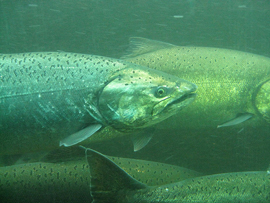 Warm water temperatures in the north Pacific Ocean are starting to cool after three years, but their effect on Northwest salmon will persist for another year or two. “Strange times, but things are looking up, that’s the message,’’ said Marisa Litz of the Washington Department of Fish and Wildlife. Litz made her comments on Tuesday at the agency’s annual unveiling of Columbia River, coastal and Puget Sound salmon forecasts. She recently completed her doctorate from Oregon State University in Fisheries Science, focusing on how variable ocean conditions affect growth and survival of young salmon in the Northwest. Tuesday’s meeting began a six-week process that concludes with the Pacific Fishery Management Council adopting ocean salmon fishing seasons in mid-April. continue reading the story here 11:31
Warm water temperatures in the north Pacific Ocean are starting to cool after three years, but their effect on Northwest salmon will persist for another year or two. “Strange times, but things are looking up, that’s the message,’’ said Marisa Litz of the Washington Department of Fish and Wildlife. Litz made her comments on Tuesday at the agency’s annual unveiling of Columbia River, coastal and Puget Sound salmon forecasts. She recently completed her doctorate from Oregon State University in Fisheries Science, focusing on how variable ocean conditions affect growth and survival of young salmon in the Northwest. Tuesday’s meeting began a six-week process that concludes with the Pacific Fishery Management Council adopting ocean salmon fishing seasons in mid-April. continue reading the story here 11:31
Governor Brown’s interference pits her against commercial fisherman
 In an astoundingly ignorant and heavy-handed display of putting urban political correctness ahead of rural jobs, Gov. Kate Brown last week dictated that the citizen members of the Oregon Fish and Wildlife Commission reverse their January decision that gave commercial fishermen a minimally fair share of the Columbia River’s salmon allocation. Addressing commissioners as if they are misbehaving children, Brown told Chairman Michael Finley the commission majority’s acknowledgment of reality is “not acceptable” and that “I expect” the commission to acquiesce to her interpretation of the facts by April 3. Fish and Wildlife Commission members are in an infinitely better position to judge the ineffectiveness of salmon policies than is the governor. Read the Op-ed here 17:03
In an astoundingly ignorant and heavy-handed display of putting urban political correctness ahead of rural jobs, Gov. Kate Brown last week dictated that the citizen members of the Oregon Fish and Wildlife Commission reverse their January decision that gave commercial fishermen a minimally fair share of the Columbia River’s salmon allocation. Addressing commissioners as if they are misbehaving children, Brown told Chairman Michael Finley the commission majority’s acknowledgment of reality is “not acceptable” and that “I expect” the commission to acquiesce to her interpretation of the facts by April 3. Fish and Wildlife Commission members are in an infinitely better position to judge the ineffectiveness of salmon policies than is the governor. Read the Op-ed here 17:03
Gillnetter heeds siren call of the river – Fishing, family, community. That’s Crouse’s melody.
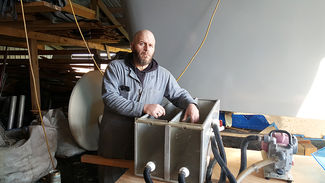 Crouse didn’t come from a fishing family but he grew up in a neighborhood of fishermen in Skamokawa. “For as long as I can remember I wanted to fish the river,” Crouse said. “In kindergarten they had us make plates out of clay and I drew a gillnet boat on mine.” When he was 14, he asked his basketball coach, Bill Olsen if he could work for him on the river. At 15, he went to Alaska to fish during the summer. “Paul Dretsch worked in a cannery up there and he told me to work there until I found a job on a boat,” Crouse said. “There is a radio station in the Bristol Bay area, and every three hours job listings came up. After my second shift in the cannery, I called someone who was advertising for boat board fish picker. That was my first job up there.” It was everything he wanted and it was more difficult than he had imagined. In his mid-40s now, Crouse works at Wauna four days a week and waits to hear when he can get back out on the river. He rebuilds boats and buys outfits from retiring fishermen when he can. He’ll take what he needs and part and parcel out the rest to sell. His wife, Erla, drives a school bus and works at her coffee shop in Cathlamet, Waterway Espresso. Read the story here 09:16
Crouse didn’t come from a fishing family but he grew up in a neighborhood of fishermen in Skamokawa. “For as long as I can remember I wanted to fish the river,” Crouse said. “In kindergarten they had us make plates out of clay and I drew a gillnet boat on mine.” When he was 14, he asked his basketball coach, Bill Olsen if he could work for him on the river. At 15, he went to Alaska to fish during the summer. “Paul Dretsch worked in a cannery up there and he told me to work there until I found a job on a boat,” Crouse said. “There is a radio station in the Bristol Bay area, and every three hours job listings came up. After my second shift in the cannery, I called someone who was advertising for boat board fish picker. That was my first job up there.” It was everything he wanted and it was more difficult than he had imagined. In his mid-40s now, Crouse works at Wauna four days a week and waits to hear when he can get back out on the river. He rebuilds boats and buys outfits from retiring fishermen when he can. He’ll take what he needs and part and parcel out the rest to sell. His wife, Erla, drives a school bus and works at her coffee shop in Cathlamet, Waterway Espresso. Read the story here 09:16
Oregon lawmaker promises ‘dog fight’ over gillnets in legislature
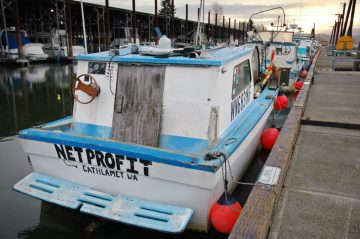 Oregon and Washington approved different plans for managing commercial fishing on the Columbia River this month, and one elected official predicted “there will be consequences” for walking away from a two-state compromise that would’ve phased out gillnets this year. Sen. Fred Girod (R-Stayton), said he was outraged by the Oregon Fish and Wildlife Commission’s vote Friday to keep allowing gillnets on the river, and he’s considering introducing either a ban on the fishing method altogether or charging a fee to commercial fisherman on the river. “We’re all trying to figure out what we can do,” Girod said. “I can guarantee there’s going to be a dog fight.” Oregon and Washington had pledged to phase-out gillnets on the main channel of the river as part of a compromise that averted a messy ballot fight in Oregon in 2012. The reforms didn’t apply to tribal fisheries. Read the story here 08:44
Oregon and Washington approved different plans for managing commercial fishing on the Columbia River this month, and one elected official predicted “there will be consequences” for walking away from a two-state compromise that would’ve phased out gillnets this year. Sen. Fred Girod (R-Stayton), said he was outraged by the Oregon Fish and Wildlife Commission’s vote Friday to keep allowing gillnets on the river, and he’s considering introducing either a ban on the fishing method altogether or charging a fee to commercial fisherman on the river. “We’re all trying to figure out what we can do,” Girod said. “I can guarantee there’s going to be a dog fight.” Oregon and Washington had pledged to phase-out gillnets on the main channel of the river as part of a compromise that averted a messy ballot fight in Oregon in 2012. The reforms didn’t apply to tribal fisheries. Read the story here 08:44
Sportsmen, commercials feud over Columbia River reforms
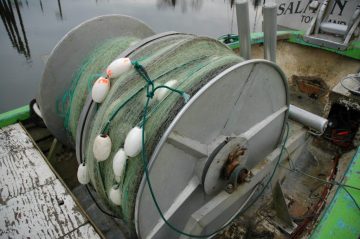 Sport fishermen from Southwest Washington repeatedly exhorted the state Fish and Wildlife Commission on Saturday to implement fully in 2017 the most sweeping reforms in Columbia River salmon management in decades. And their commercial foes, also from Southwest Washington, were equally strident that the plan adopted four years ago to eliminate gillnetting from the main river and to prioritize angling has been fraught with problems in the 2013-16 transition period. The nine-member citizen panel will meet Jan. 13 and 14 in Vancouver to make its decision. The Oregon Fish and Wildlife Commission is going through similar deliberations, then the two states will need to reconcile any differences in their policies. Reforms adopted by both states in early 2013 allocated more chinook salmon to sportsmen in the main Columbia and restricted gillnetting to off-channel sites like Youngs Bay near Astoria. The reforms also called for commercial fishing that remained in the main Columbia to be done with live-capture methods — such as purse seines and beach seines — designed to harvest hatchery stocks and release wild fish. Read the rest here 08:20
Sport fishermen from Southwest Washington repeatedly exhorted the state Fish and Wildlife Commission on Saturday to implement fully in 2017 the most sweeping reforms in Columbia River salmon management in decades. And their commercial foes, also from Southwest Washington, were equally strident that the plan adopted four years ago to eliminate gillnetting from the main river and to prioritize angling has been fraught with problems in the 2013-16 transition period. The nine-member citizen panel will meet Jan. 13 and 14 in Vancouver to make its decision. The Oregon Fish and Wildlife Commission is going through similar deliberations, then the two states will need to reconcile any differences in their policies. Reforms adopted by both states in early 2013 allocated more chinook salmon to sportsmen in the main Columbia and restricted gillnetting to off-channel sites like Youngs Bay near Astoria. The reforms also called for commercial fishing that remained in the main Columbia to be done with live-capture methods — such as purse seines and beach seines — designed to harvest hatchery stocks and release wild fish. Read the rest here 08:20
Decisions coming soon on Columbia salmon reforms
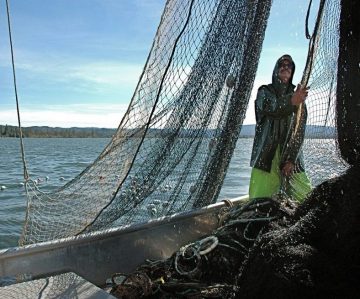 The Washington and Oregon fish and wildlife commissions will decide in the next two months whether to implement fully in 2017 the biggest overhaul of Columbia River salmon policies in seven decades. Reforms adopted by both states in early 2013 allocated more chinook salmon to sportsmen in the main Columbia and restricted gillnetting to off-channel sites like Youngs Bay near Astoria. The reforms also called for commercial fishing that remained in the main Columbia to be done with live-capture methods — such as purse seines and beach seines — designed to harvest hatchery stocks and release wild fish. The reforms had a four-year transition period, which ends Dec. 31. Full implementation was to begin on Jan. 1. But, there have been issues during the 2013-2016 transition period. The effort to stock more chinook and coho in off-channel spots, and development of new off-channel places, has met with some success, but failures, too. Testing of beach and purse seines in the main Columbia have found much higher mortality rates of released fish than anticipated four years ago. Read the rest here 12:38
The Washington and Oregon fish and wildlife commissions will decide in the next two months whether to implement fully in 2017 the biggest overhaul of Columbia River salmon policies in seven decades. Reforms adopted by both states in early 2013 allocated more chinook salmon to sportsmen in the main Columbia and restricted gillnetting to off-channel sites like Youngs Bay near Astoria. The reforms also called for commercial fishing that remained in the main Columbia to be done with live-capture methods — such as purse seines and beach seines — designed to harvest hatchery stocks and release wild fish. The reforms had a four-year transition period, which ends Dec. 31. Full implementation was to begin on Jan. 1. But, there have been issues during the 2013-2016 transition period. The effort to stock more chinook and coho in off-channel spots, and development of new off-channel places, has met with some success, but failures, too. Testing of beach and purse seines in the main Columbia have found much higher mortality rates of released fish than anticipated four years ago. Read the rest here 12:38
Astoria gillnetters, recreational anglers renew battle – Kitzhaber salmon plan getting tough review
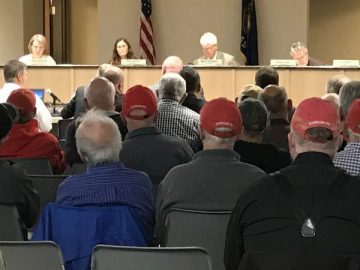 More than 100 people filled Oregon Department of Fish and Wildlife’s meeting room Wednesday as the state wildlife commission heard testimony on the status of Columbia River salmon and steelhead runs and how they are harvested by commercial and sport anglers. The commission won’t take additional action on the recommendations until December, but the argument is hot and divisive. Recreational anglers, including fishing guides and led by the Coastal Conservation Association, are furious at the proposal and consider it a betrayal of the four-year transition plan agreed to by Oregon and Washington state. Dozens of them piled into the meeting room, many wearing red CCA hats and sporting stickers proclaiming “No broken promises.” In a letter to commission members, CCA Oregon Chairman Dave Schamp said it would be irresponsible to allow the gillnet fleet’s continued use of “archaic and destructive gear.” He and others believe beach and purse seines are a viable alternative to gillnets. Commercial fishers strongly disagree. Read the story here, and read Kitzhaber salmon plan getting tough review – Read the story here 15:20
More than 100 people filled Oregon Department of Fish and Wildlife’s meeting room Wednesday as the state wildlife commission heard testimony on the status of Columbia River salmon and steelhead runs and how they are harvested by commercial and sport anglers. The commission won’t take additional action on the recommendations until December, but the argument is hot and divisive. Recreational anglers, including fishing guides and led by the Coastal Conservation Association, are furious at the proposal and consider it a betrayal of the four-year transition plan agreed to by Oregon and Washington state. Dozens of them piled into the meeting room, many wearing red CCA hats and sporting stickers proclaiming “No broken promises.” In a letter to commission members, CCA Oregon Chairman Dave Schamp said it would be irresponsible to allow the gillnet fleet’s continued use of “archaic and destructive gear.” He and others believe beach and purse seines are a viable alternative to gillnets. Commercial fishers strongly disagree. Read the story here, and read Kitzhaber salmon plan getting tough review – Read the story here 15:20

Oregon proposes ‘rebalance’ of Columbia River salmon reforms
The Oregon Department of Fish and Wildlife is proposing a “strategic rebalance” of the landmark 2012 Columbia River salmon management reforms, including continuation of gillnetting for fall chinook between Woodland and Beacon Rock. The department’s recommendations will be presented to the Oregon Fish and Wildlife Commission in a one-topic, all-day meeting beginning at 8 a.m. Wednesday at the Department of Fish and Wildlife headquarters, 4034 Fairview Industrial Drive, Salem. In late 2012 and early 2013, the Washington and Oregon commissions adopted the biggest overhaul of Columbia River salmon policies in seven decades. Jump-started by former Oregon Gov. John Kitzhaber, the policies called for allocating more chinook salmon to sportsmen in the main Columbia and restricting gillnetting to off-channel sites like Youngs Bay near Astoria. Among recommendations for 2017 developed by the Oregon Department of Fish and Wildlife are: Read the rest here 11:17
Former Oregon Gov. Kitzhaber’s salmon plan a mismatch By Hobe Kytr
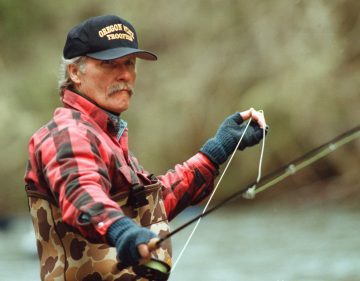 Have you ever wondered just how that salmon got to your table at the restaurant, or in the grocery store, or on your barbecue at home? Salmon not only have to swim through a lot of water, both fresh and salt, but a lot of regulations as well. But those regulations protect them, ensuring there will be salmon for future generations.The following outlines how conservation of salmon works, particularly for the Columbia River, the greatest salmon river of them all. It covers a century and a half of how people have coped with changes in the natural environment, fluctuations in fish populations, ocean conditions, pollution, control of fishing operations, as well as a host of other issues, by developing laws and structures that help ensure their survival. Read the op-ed here 12:33
Have you ever wondered just how that salmon got to your table at the restaurant, or in the grocery store, or on your barbecue at home? Salmon not only have to swim through a lot of water, both fresh and salt, but a lot of regulations as well. But those regulations protect them, ensuring there will be salmon for future generations.The following outlines how conservation of salmon works, particularly for the Columbia River, the greatest salmon river of them all. It covers a century and a half of how people have coped with changes in the natural environment, fluctuations in fish populations, ocean conditions, pollution, control of fishing operations, as well as a host of other issues, by developing laws and structures that help ensure their survival. Read the op-ed here 12:33
On the Columbia River Commercial fishermen are endangered
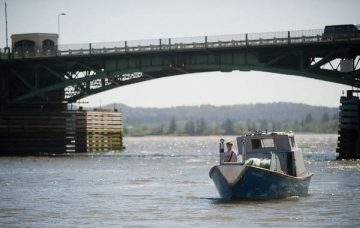 It seems a bit odd that some of our neighbors should have to reintroduce themselves. But many new residents in our community don’t seem to know who they are. They are your fishermen. The vast majority of citizens are not recreational or commercial fishermen. We live on one of the world’s great rivers — once known as the world’s greatest salmon stream. Astoria also was once known as the salmon-canning capital of the world. But development of the Columbia River basin, and the era of hydroelectric dam building, eliminated all but around 40 percent of the Columbia’s existing salmon habitat. Our once great abundance of salmon is no longer what it was. But it’s not gone. Not by a long shot. Last year, the largest run of Chinook salmon since 1938 returned to the Columbia. This is still the greatest producer of Chinook salmon, also known as king salmon, in the world. And if you like to eat salmon (I know I do), someone has to catch it for you. For most of us, that means we depend on commercial fishermen. Read the story here 09:49
It seems a bit odd that some of our neighbors should have to reintroduce themselves. But many new residents in our community don’t seem to know who they are. They are your fishermen. The vast majority of citizens are not recreational or commercial fishermen. We live on one of the world’s great rivers — once known as the world’s greatest salmon stream. Astoria also was once known as the salmon-canning capital of the world. But development of the Columbia River basin, and the era of hydroelectric dam building, eliminated all but around 40 percent of the Columbia’s existing salmon habitat. Our once great abundance of salmon is no longer what it was. But it’s not gone. Not by a long shot. Last year, the largest run of Chinook salmon since 1938 returned to the Columbia. This is still the greatest producer of Chinook salmon, also known as king salmon, in the world. And if you like to eat salmon (I know I do), someone has to catch it for you. For most of us, that means we depend on commercial fishermen. Read the story here 09:49
Salmon gillnetting to resume Aug. 7 in the Columbia River
 Nine nights of gillnetting in the lower Columbia River between Warrior Rock and Beacon Rock will begin Aug. 7. The commercial fleet will fish Sundays, Tuesdays and Thursdays from 9 p.m. to 6 a.m. through Aug. 26, according to regulations adopted today in Vancouver by the Columbia River Compact. Nine-inch-minimum-mesh nets will be required. Robin Ehlke, assistant Columbia River policy coordinator for the Washington Department of Fish and Wildlife, said the netters are projected to catch 2,200 fall chinook in the first week, 7,500 in the second week and 19,700 in the third week. Read the rest here 10:06
Nine nights of gillnetting in the lower Columbia River between Warrior Rock and Beacon Rock will begin Aug. 7. The commercial fleet will fish Sundays, Tuesdays and Thursdays from 9 p.m. to 6 a.m. through Aug. 26, according to regulations adopted today in Vancouver by the Columbia River Compact. Nine-inch-minimum-mesh nets will be required. Robin Ehlke, assistant Columbia River policy coordinator for the Washington Department of Fish and Wildlife, said the netters are projected to catch 2,200 fall chinook in the first week, 7,500 in the second week and 19,700 in the third week. Read the rest here 10:06
Federal Agencies start work on Columbia River fishing deal
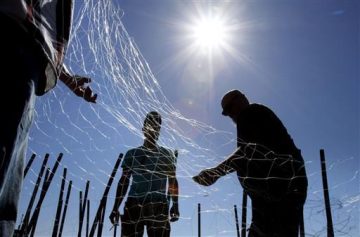 Federal authorities are working on a plan aimed at deciding how much sport, commercial and tribal fishing for salmon and steelhead will be allowed in the Columbia River and its tributaries as part of a long-term agreement starting in 2018. The other main component considered in the environmental review being prepared by the National Marine Fisheries Service and U.S. Fish and Wildlife Service is hatchery production levels. The agencies will use the document as they work to craft an agreement with Idaho, Oregon and Washington, as well as tribes in those states with harvest treaty rights. The length of the agreement has yet to be determined, but a 10-year timeframe is generally supported. Read the story here 16:20
Federal authorities are working on a plan aimed at deciding how much sport, commercial and tribal fishing for salmon and steelhead will be allowed in the Columbia River and its tributaries as part of a long-term agreement starting in 2018. The other main component considered in the environmental review being prepared by the National Marine Fisheries Service and U.S. Fish and Wildlife Service is hatchery production levels. The agencies will use the document as they work to craft an agreement with Idaho, Oregon and Washington, as well as tribes in those states with harvest treaty rights. The length of the agreement has yet to be determined, but a 10-year timeframe is generally supported. Read the story here 16:20
Commercials to net Columbia River on Tuesday. Why would they bother?
 Ten hours of commercial fishing — but with a four spring chinook-per-vessel limit — are scheduled Tuesday in the lower Columbia River. Washington and Oregon officials adopted the fishery on Monday. Netting with 4.25-inch-minimum mesh nets will be allowed from 10 a.m. to 8 p.m. from Beacon Rock to the ocean. The commercial fleet has an early-season allocation of 1,222 upper Columbia-origin spring chinook plus 7,150 Willamette River-origin chinook, said biologist John North of the Oregon Department of Fish and Wildlife. Last Tuesday, the commercials fished nine hours and landed 1,192 total spring chinook and 890 upper Columbia-origin chinook from 86 deliveries. Read the article, click here 20:28
Ten hours of commercial fishing — but with a four spring chinook-per-vessel limit — are scheduled Tuesday in the lower Columbia River. Washington and Oregon officials adopted the fishery on Monday. Netting with 4.25-inch-minimum mesh nets will be allowed from 10 a.m. to 8 p.m. from Beacon Rock to the ocean. The commercial fleet has an early-season allocation of 1,222 upper Columbia-origin spring chinook plus 7,150 Willamette River-origin chinook, said biologist John North of the Oregon Department of Fish and Wildlife. Last Tuesday, the commercials fished nine hours and landed 1,192 total spring chinook and 890 upper Columbia-origin chinook from 86 deliveries. Read the article, click here 20:28
Oregon eyes Cathlamet Channel as gillnet site
 State officials are hopeful they can open a second lower Columbia River off-channel commercial fishing location in 2016, this one in Cathlamet Channel of Wahkiakum County. Establishing additional off-channel commercial fishing areas, where gillnets can be used, is a key component of the Columbia River fishing reforms adopted by the Washington and Oregon fish and wildlife commission in 2013. Oregon has off-channel sites in Youngs Bay, Blind Slough-Knappa Slough and Tongue Point-South Channel, while Washington’s only site is in Deep River, a location which works for coho, but not well for chinook. Read the rest here 15:07
State officials are hopeful they can open a second lower Columbia River off-channel commercial fishing location in 2016, this one in Cathlamet Channel of Wahkiakum County. Establishing additional off-channel commercial fishing areas, where gillnets can be used, is a key component of the Columbia River fishing reforms adopted by the Washington and Oregon fish and wildlife commission in 2013. Oregon has off-channel sites in Youngs Bay, Blind Slough-Knappa Slough and Tongue Point-South Channel, while Washington’s only site is in Deep River, a location which works for coho, but not well for chinook. Read the rest here 15:07
Work under way on Endangered Species Act hatchery plans
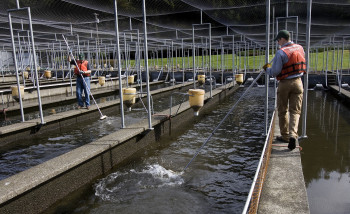 The National Marine Fisheries Service says it has completed work on plans for 26 Columbia River hatcheries and is actively working on Endangered Species Act review of 32 more, including 16 on lower Columbia tributaries in Washington. The numbers from the federal fishery agency were provided in response to a 60-day notice of intent to sue announced Jan. 13 by the Wild Fish Conservancy, which claims the government is funding Columbia River hatcheries prior to meeting mandated review of plans under the Endangered Species Act. Read the rest here 11:09
The National Marine Fisheries Service says it has completed work on plans for 26 Columbia River hatcheries and is actively working on Endangered Species Act review of 32 more, including 16 on lower Columbia tributaries in Washington. The numbers from the federal fishery agency were provided in response to a 60-day notice of intent to sue announced Jan. 13 by the Wild Fish Conservancy, which claims the government is funding Columbia River hatcheries prior to meeting mandated review of plans under the Endangered Species Act. Read the rest here 11:09
Editorial: Time to speak up for commercial fishing
 Last week included one of the signature events on the Pacific Northwest’s annual calendar: the setting of spring fishing seasons on the Columbia River. The forecast for the important spring Chinook run is about 300,000 to the river’s mouth, about 28 percent fewer than last year but more than the 10-year average of 285,000. Forecasts are one thing and reality quite another, but there is a good chance that fishermen and the businesses that rely on them will have a fun few weeks from March 1 to April 9. Read the rest here 15:17
Last week included one of the signature events on the Pacific Northwest’s annual calendar: the setting of spring fishing seasons on the Columbia River. The forecast for the important spring Chinook run is about 300,000 to the river’s mouth, about 28 percent fewer than last year but more than the 10-year average of 285,000. Forecasts are one thing and reality quite another, but there is a good chance that fishermen and the businesses that rely on them will have a fun few weeks from March 1 to April 9. Read the rest here 15:17
Willapa Bay gillnetters lock horns with state over Salmon Fishing Policy
 Drought hit Willapa Bay salmon runs hard this year while questions remain about how a new commercial salmon fishing policy affects local fishermen. At a recent meeting at Naselle High School, representatives from the Washington Department of Fish and Wildlife expected to field questions regarding the die-off of approximately 10,000 salmon below the Naselle Hatchery due to low stream flow and other drought-related factors this fall. Instead, they spent most of the time hearing concerns from commercial gillnet fishermen living on both sides of the Columbia River regarding the salmon fishing policy that went into effect earlier this year. Read the article here 08:09
Drought hit Willapa Bay salmon runs hard this year while questions remain about how a new commercial salmon fishing policy affects local fishermen. At a recent meeting at Naselle High School, representatives from the Washington Department of Fish and Wildlife expected to field questions regarding the die-off of approximately 10,000 salmon below the Naselle Hatchery due to low stream flow and other drought-related factors this fall. Instead, they spent most of the time hearing concerns from commercial gillnet fishermen living on both sides of the Columbia River regarding the salmon fishing policy that went into effect earlier this year. Read the article here 08:09
Seine or insane? Switch to new fishing method still clouded by practical questions
 Under a plan by disgraced former Oregon Gov. John Kitzhaber, the beginning of the end of commercial gillnet fishing on the main stem of the Columbia River is little more than a year away, but it’s still not clear if gear banned on the river for decades will ultimately replace gillnets. Oregon and Washington’s advisory group and fishery managers in both states are waiting for new information to be released that could clarify what the impacts of the proposed replacement gear — beach and purse seines — are on Columbia River salmon. Read the rest here 20:02
Under a plan by disgraced former Oregon Gov. John Kitzhaber, the beginning of the end of commercial gillnet fishing on the main stem of the Columbia River is little more than a year away, but it’s still not clear if gear banned on the river for decades will ultimately replace gillnets. Oregon and Washington’s advisory group and fishery managers in both states are waiting for new information to be released that could clarify what the impacts of the proposed replacement gear — beach and purse seines — are on Columbia River salmon. Read the rest here 20:02
Promising forecast for fall chinook run on Columbia River
 After record-high temperatures and drought decimated summer fisheries, Ervin Leslie only hopes that fish biologists are on the mark in forecasting the fall chinook run now under way as the fifth-largest in recent history. More than 925,000 fall chinook are expected to return to the Columbia River. The largest run number of 1,175,700 was in 1941. But that’s not the only bounty in the forecast. Other healthy runs anticipated include about 200,000 coho and a summer steelhead run estimated to reach about 300,000 by the time it ends later this month. Read the rest here 16:51
After record-high temperatures and drought decimated summer fisheries, Ervin Leslie only hopes that fish biologists are on the mark in forecasting the fall chinook run now under way as the fifth-largest in recent history. More than 925,000 fall chinook are expected to return to the Columbia River. The largest run number of 1,175,700 was in 1941. But that’s not the only bounty in the forecast. Other healthy runs anticipated include about 200,000 coho and a summer steelhead run estimated to reach about 300,000 by the time it ends later this month. Read the rest here 16:51


































